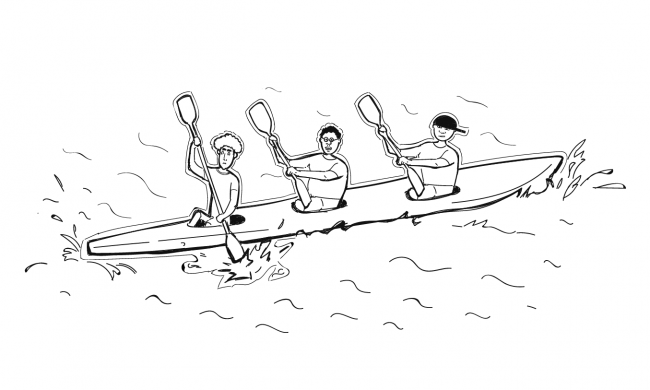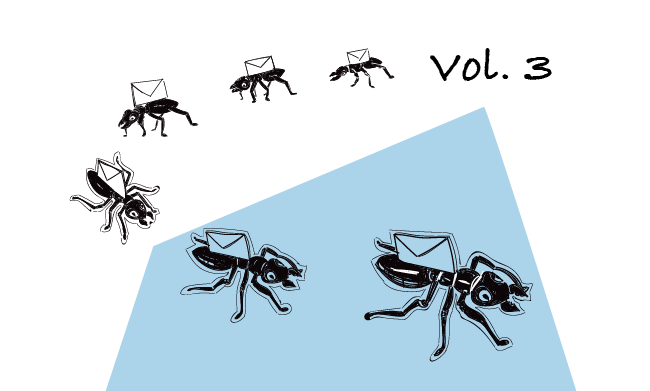If you’re considering building an internal outbound sales team, it’s a sign that your company levels up. But how do you know this is actually the right moment to hire? And what roles do you need in your team for a start? What’s the difference between SDR and BDR? How to figure it all out?
This blog post answers all these questions and sheds some light on how to build a team that is effective and motivated to succeed.
How can you do outbound sales in your company?
There are two main ways:
- Build your in-house outbound sales team – hire people who will find and research prospects and turn them into customers.
- Outsource the process – find an agency or independent salespeople who will generate leads and close deals for you.
Now, which one is a better option?
The pros and cons of outsourcing outbound sales to an agency
One of the benefits of sales team outsourcing is that you can leverage one’s proven sales methods and expertise to achieve your goals faster. You don’t have to devote precious time and resources to train an in-house team as well as develop your own lead generation and sales process. This is especially important when you want to launch and start selling your product as quickly as possible.
Outsourcing also gives more cost flexibility. You have the freedom to decide if and when you want to scale up or go down depending on the demand, whereas having an in-house sales team is a fixed expense no matter how big the sales.
The con of outsourcing outbound sales is that you lack control over the lead generation and lead qualification process. The leads generated by an agency may turn out not to match your ICP so well and therefore not to be a good fit for your product or service. And this is one of the main reasons for customer churn. Since you don’t have control over who the chosen prospects are, you also have less control over the churn rate and your revenue.
If your business is just making its first steps on the market, its future is yet unsure and you’re not ready to hire someone, you can begin with outsourcing. It’s a good short-term way out for early-stage and very small companies that start lean.
And as your product is getting traction and has proved itself on the market already, it may be more effective to build an outbound sales team of your own. Here’s why.
The pros and cons of building an in-house outbound sales team
Nobody knows as much about your product and its users as people who are part of your team. They’ll know best how to communicate its value to make it appeal to your prospects’ needs. They act as your business ambassadors who convey your brand message the way you want it.
Also, building an internal outbound sales team gives you more control over the whole process, so you’re able to monitor and optimize it underway. You may identify possible bottlenecks and introduce some improvements to the process where needed, so your sales pipeline becomes even more effective.
Employing a sales team incurs a fixed monthly expense no matter the sales results. Your product must generate a predictable monthly revenue for you to afford to grow an internal sales team. You’ll also need to dedicate some resources to train your new hires. However, it’s a long-term investment that will start bringing profits very soon.
There’s no one and only the best method to do outbound sales. You may also want to combine both approaches and outsource the process with the support of your in-house team, for example, leave the lead generation to the outsource sales reps and focus internally on closing deals. You gotta choose what seems like the right option in your case.
If you’re ready to grow your business and believe this is the right moment to put together a team dedicated to outbound sales, here’s how to build and prep it from the ground up.
Who to hire for your outbound sales team?
Finding and researching prospects, planning out the strategy, handling the outreach, following up, qualifying leads, building the relationship with leads and business partners, and closing the deals is quite some work to do for one role, won’t you agree?
And on a scale, it’s close to impossible to do it all effectively and meet sales goals.
Especially that managing each step of the pipeline requires different skills. So in order to maintain a healthy pipeline, you must break down the outbound sales process into a few roles: a sales team manager, an SDR, a salesperson (also called a closer), and a BDR.
Who is an SDR in sales?
Sales Development Representative’s job is finding and researching prospects, making connections, and creating opportunities for salespeople. In other words, they are the first touchpoint between prospects and your company.
You may get a full-stack SDR or divide the role into two separate positions:
- SDR strategist – who will come up with campaign strategy, create cold email copy and plan out the sending.
- and SDR researcher – who will handle prospecting.
Check what skills to look for in candidates for both roles here:
How to Hire an SDR to Handle Cold Emailing at Your Company? >>
Who is a BDR in sales?
BDR stands for Business Development Representative. This position usually has a broader scope of responsibilities than SDR, but it largely depends on the company size. In big companies, BDRs build relationships not only with customers, but also with strategic business partners to create cross-selling and promotion opportunities. In smaller businesses, the scope of a BDR’s responsibilities may look a bit different.
Note: Quite often, especially in big SaaS companies, BDR and SDR are used interchangeably. Both roles are the first point of contact in the outbound sales funnel and usually don’t close sales.
What are the skills that characterize a good BDR? A mix of people skills and an analytical, target-oriented mindset is the perfect combination for a successful BDR. Since business development reps have a lot on their plates, they also need to be good at managing their time and organizing their daily work. They must be able to juggle many tasks at once.
Check what to pay attention to when hiring a BDR for your team:How to Hire a BDR to Boost Sales at Your Company? >>
Who is a closer in sales?
Closers, as the name suggests, turn a lead into a sale. Their task is to develop the relationship with a lead started by an SDR and clinge the deal. They also negotiate the conditions of a deal.
What makes a successful closer? First and foremost a strong communication ability. Salespeople should be confident speakers, but also attentive listeners. A good closer should know that selling is about leading the conversation in the right direction, not giving a monologue.
Also, effective negotiation and subtle persuasion skills are must-haves for a closer. They ought to know when to compromise and when to be insistent. The way to win a prospect’s trust is through tactful diplomacy.
In practice, in a freshly created outbound sales team the roles of an SDR, a BDR and a closer quite often aren’t so distinctive yet and it may happen that one person is responsible for prospecting as well as moving the leads down the sales funnel. However, as the process takes shape and scales up you should diversify the roles and make them more specialized. Otherwise, your outbound sales won’t be effective.
Tips on how to build a successful outbound sales team
You know now what roles your team needs. But hiring is just the beginning. Here are some hints that will help you build and manage the next-level outbound sales squad.
Two are better than one
If it’s possible, hire two people for one role. This way, they will be able to support each other in their daily tasks. Also, if one of them takes a long term sick leave or suddenly leaves the company, the process can go on and you’re not left in the lurch.
Develop your outbound sales process
One of the first things on your to-do list when establishing an outbound sales team in your company should be to build an outbound sales pipeline and develop a process that can be optimized and scaled up in the future.
You need such internal guidelines to ensure that all your team members are on the same page when it comes to steps in your lead generation process. Straightforward principles on what and how to do will also reduce confusion and simply make everybody’s job easier. Plus, with a clear path to follow the success will become much more attainable.
Invest time and effort in training
Plan an extensive onboarding process for new employees. Teach them about the product and the value it gives to your customers, your ICP, prospecting, the tools they will be using on a daily basis, everything that will help them generate leads and close sales. If there’s no knowledge source onboard in your team, hire a consultant in outbound sales. I guarantee that it will pay off.
Provide your outbound sales team with the right tools
Equipping your team in the right set of tools will make your team’s efforts more effective and allow them to focus more on developing relationships instead of managing the mundane tasks that can be automated.
Your outbound sales toolset should include:
- a prospecting tool – to find email addresses and other contact details of your ideal prospects,
- a tool for cold email follow-up automation – so your SDRs can schedule personalized outbound campaigns and track the results of their work,
- a powerful CRM – to manage the deals,
- appointment scheduling software – so your prospects will be able to book a meeting with you with just a few clicks.
Hire in-house employees
Unless you have a full-blown outbound sales process that is proved to work effectively, managing remote employees may be too tricky at the beginning. It’s much easier to work out the processes from scratch together as a team when you all work in one office.
Ensure your newly hired are familiar with your company’s values
Have in mind that your outbound sales team members are the first people to make contact with potential customers. Make sure they know, and portray, your company’s core values to convey the right message.
Set clear goals
It takes some time to figure out what works and what doesn’t in your outbound sales process. There’s a lot of research and testing along the way. Without having well-defined goals your team may find it difficult to stay motivated and effective. In this blog post you can find a 6-step recipe for how to make them ambitious, yet attainable:
How to Set Achievable Sales Targets for an Outbound Sales Team >>
There are various frameworks you can use to establish objectives for your outbound sales team. For example, at Woodpecker we’ve implemented the OKRs. Check how it works for us:
How to Manage a Sales Team to Make Prospecting Predictable? >>
Apart from setting goals for the whole team, it’s also a good idea for each team member to set their own professional development goals that are in line with the team goals. Your employees will be able to steer their development in the right direction and you will get the insight into what’s the best way to shape their career and keep them motivated.
Give and receive feedback
For some people giving and receiving feedback comes out naturally, while for others it’s a whole new skill to master. Your task is to ensure a feedback-friendly culture in your team from day one. Make every, even the smallest idea count. Encourage team members to share their feedback on the process as well as the teamwork.
Your turn
I hope the above tips will help you build and prep a successful team of motivated experts in outbound sales who will contribute to your business growth. If you have any questions regarding building an outbound sales team, don’t hesitate to leave a comment below.
FAQ on building outbound sales team
Check out the answers.
How to build an outbound sales team?
Building an outbound sales team involves hiring key roles like SDRs, BDRs, and closers. Develop a clear outbound sales process to guide your team through each step of the sales cycle.
Train your sales reps on your product, ideal customer profile, and use tools for prospecting, email automation, CRM, and scheduling. Set clear goals, use feedback, and provide ongoing support to keep your outbound sales efforts effective.
How to get better at outbound sales?
Improving outbound sales starts with a solid outbound sales strategy. Train your outbound sales reps to understand the product and identify potential customers.
Automate parts of the outbound sales process like follow-ups to save time. Review your sales strategy regularly, gather team feedback, and focus on refining your outreach methods.
How do you build an efficient sales team?
An efficient sales team needs clear roles, a structured outbound sales process, and the right tools. Hire skilled sales reps for prospecting and closing deals.
Provide them with CRM, email automation, and scheduling tools. Set measurable goals and track progress. Encourage team feedback to keep improving the outbound sales strategy.
What is an outbound sales strategy?
An outbound sales strategy involves actively reaching out to potential customers using cold calls, emails, and social media.
Unlike inbound sales, where customers come to you, outbound sales teams connect with prospects to guide them through the sales cycle. A good strategy requires clear steps, regular review, and optimization.
What is the difference between inbound and outbound sales?
Inbound sales attract potential customers through marketing, while outbound sales involves sales teams reaching out directly to prospects. Outbound sales reps use emails, calls, and social media to introduce products. Both approaches can work together in a strong sales strategy to maximize the sales cycle.
READ ALSO

5 Ways a SaaS Sales Team Can Cooperate with Marketing for Better Lead Generation
Marketing and sales used to be portrayed in stark contrast. Nowadays, there's an ongoing trend to go for "sales and marketing alignment" -- that is, making the two teams work together. There's little information on how to do it exactly. Many focus on improving the flow of information between the two departments. Is that all that can be done? Today, I'll show you a couple of ways the Woodpecker marketing and sales teams cooperate to create a streamlined lead generation process.

10 Tips to Write a Cold Sales Email From a Copywriter
Cold email copy can make or break your email campaign. A perfectly targeted prospect base won’t guarantee success if your message doesn’t catch their interest. Unfortunately, many cold emails fail to do that. The most common problems with cold email copy that I've come across are the lack of clarity, impersonality, unnecessary wordiness and egocentrism. These things make prospects delete the message without even reading it till the end. In this blog post, I want to share with you some copywriting tips that will help you write more prospect-oriented, valuable and engaging sales emails that will get opened, read and replied to.

Get More From Your SaaS Website: How to Convert Inbound Leads Into Sales vol 3.
When I look at our Google Analytics data at Woodpecker, I can see that the vast majority of our website visitors that become leads come from organic or paid search. And I believe that it's similar in the case of your SaaS too. The internet users run a query in Google and your website comes up among other results. That's why I believe your website can be one of the surest lead generation tools at your disposal. Let's learn how to do it.

